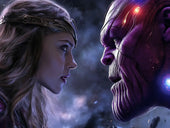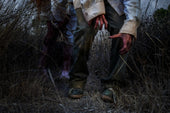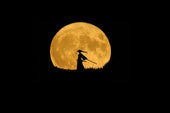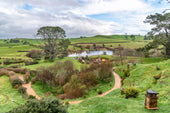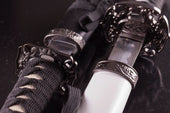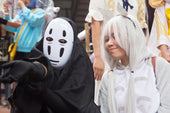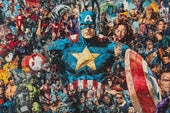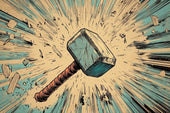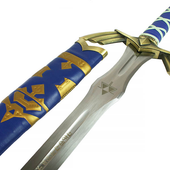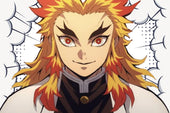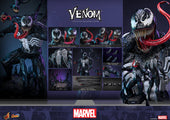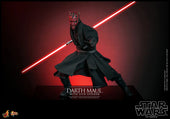Norse mythology has captured the imagination of storytellers, scholars, and fantasy enthusiasts for centuries. So when the acclaimed God of War series made its bold shift from the Greek pantheon to Norse legends, fans and mythology buffs alike were eager to see how the ancient stories would be brought to life. But how accurate is God of War's depiction of Norse mythology? Where does it stay faithful to the old texts, and where does it take creative liberties?
God of War blends Norse mythology with creative storytelling. While characters like Odin, Thor, and Freya are based on authentic myths, the game takes liberties—especially with Kratos and Atreus.
In this blog, we’ll break down the game’s portrayal of key characters, realms, and themes, and explore the balance between mythological accuracy and artistic interpretation. Whether you're a mythology enthusiast, gamer, or a fan of Viking history, read on to uncover what’s fact and what’s fiction.
A Quick Introduction to Norse Mythology
Before diving into God of War, it’s essential to understand the basics of Norse mythology. The primary sources of these myths are the Poetic Edda and Prose Edda, which contain poems and stories compiled in medieval Iceland. These tales speak of gods, giants, monsters, and the inevitable doom of Ragnarok—the end of the world.
Key figures include:
-
Odin: The all-father, god of wisdom, war, and magic.
-
Thor: God of thunder, protector of mankind, wielding the mighty hammer Mjolnir.
-
Freya: Goddess of love, fertility, and magic.
-
Loki: Trickster god, known for shapeshifting and causing chaos.
-
Baldur: A beloved god fated to die, signalling Ragnarok.
The cosmology includes Nine Realms, connected by the World Tree, Yggdrasil, such as Midgard (Earth), Asgard (realm of the gods), and Helheim (underworld).
Kratos and Atreus – New Faces in an Old World
One of the most significant departures from Norse mythology in God of War is the inclusion of Kratos—a character rooted in Greek mythology, not Norse. Kratos, the Ghost of Sparta, is entirely fictional and does not appear in any Norse texts. However, the developers cleverly intertwine his narrative with Norse lore by introducing his son, Atreus, whose real name is revealed to be Loki.
This twist aligns Atreus with the trickster god Loki, famous for his complex relationships and involvement in Ragnarok. However, the game reimagines Loki’s origins, portraying him as a half-god, half-giant child of Kratos and Faye (Laufey), diverging from traditional stories where Loki is a son of giants and Odin’s blood brother.
Gods and Characters – Accurate vs. Altered
Odin
In God of War, Odin is depicted as a manipulative, omnipresent figure, pulling strings behind the scenes. This representation aligns with the Odin of Norse lore, known for his relentless pursuit of knowledge and willingness to sacrifice morality for power. However, while the game paints him as a tyrant feared by all, Norse texts describe Odin with more nuance—a god of wisdom, war, death, but also poetry and prophecy.
Thor
The game’s portrayal of Thor as a brutal, heavy-drinking, violent warrior might surprise those more familiar with the Marvel version of the god. Yet, this depiction is closer to Norse sources, where Thor is both protector and destroyer, wielding Mjolnir to fend off giants but also known for his short temper and immense strength.
Freya
Freya is one of the more fascinating characters in God of War. She’s presented as a powerful goddess of magic (seiðr), fiercely protective yet deeply tragic. While many aspects align with her mythological role—goddess of love, fertility, and sorcery—the game alters details, such as her being Baldur’s mother and her strained relationship with Odin. In Norse mythology, Freya and Odin are not directly connected in this way, though Freya’s association with magic and beauty is spot-on.
Baldur
Baldur’s invulnerability and cursed existence are central to the game’s plot. According to Norse myth, Baldur is beloved by all and is invulnerable to everything except mistletoe, leading to his eventual death at Loki’s hands. The game keeps his invulnerability but adds a twist: Baldur’s curse stems from Freya’s magic, making him immune to pain but also unable to feel pleasure or sensation—a creative liberty that drives his rage and tragic arc.
Jörmungandr – The World Serpent
The World Serpent is one of the most accurate portrayals in the game. In Norse mythology, Jörmungandr is a giant sea serpent and Loki’s child, destined to fight Thor during Ragnarok. The game reflects this relationship and includes hints about their eventual confrontation. Additionally, Jörmungandr’s colossal size and ability to encircle Midgard stay true to the original lore.
The Nine Realms – Worldbuilding and Accuracy
God of War introduces players to the Nine Realms, a central feature of Norse cosmology:
-
Midgard (Earth)
-
Asgard (realm of gods)
-
Vanaheim (home of the Vanir gods)
-
Alfheim (land of light elves)
-
Svartalfheim (dwarven realm)
-
Helheim (underworld)
-
Muspelheim (realm of fire giants)
-
Niflheim (realm of ice and mist)
-
Jotunheim (land of the giants)
The game’s artistic interpretation of these realms is visually stunning, often blending mythological elements with fantastical design. For instance, Yggdrasil, the World Tree, serves as the means to travel between realms, similar to its mythological role.
However, certain liberties are taken for gameplay convenience—such as compressing the geography and simplifying some realms’ characteristics. Yet, key aspects like the importance of giants in Jotunheim or the bleakness of Helheim remain faithful.
Themes – Fate, Family, and Prophecy
Themes of fate, destiny, and family run deep in both Norse mythology and God of War. The Norse belief in an unavoidable fate—especially the prophecy of Ragnarok—is reflected in the game’s narrative. Kratos and Atreus continually grapple with their roles in an inevitable prophecy, echoing the fatalistic tone of Norse myths.
Additionally, family relationships in the game—whether between Kratos and Atreus, Freya and Baldur, or Thor and Odin—mirror the complex familial ties in Norse tales. Betrayal, loyalty, and strained parent-child dynamics are recurring motifs in both sources.
Creative Liberties and Artistic Choices
While God of War draws heavily from Norse mythology, it unapologetically alters details for narrative impact. These creative liberties include:
-
Integrating Kratos, a Greek figure, into the Norse mythos.
-
Reimagining Loki’s origins as Atreus.
-
Condensing timelines and characters to fit the game’s pacing.
-
Inventing magical artefacts and new creatures inspired by, but not found in, Norse texts.
These changes serve to balance authenticity with entertainment, allowing the game to feel grounded in myth without being restricted by it.
Why It Works – Balancing Accuracy with Entertainment
So, why do these creative choices resonate with players?
God of War maintains the spirit and thematic depth of Norse mythology while crafting an emotionally rich, action-packed narrative. Its faithful portrayals of key gods, realms, and myths are enough to satisfy mythology enthusiasts, while its innovations keep the story fresh and engaging.
The result is a respectful yet imaginative interpretation of one of history’s most fascinating mythologies.
Final Verdict: How Faithful Is God of War to Norse Mythology?
God of War successfully blends Norse mythology’s grandeur and complexity with its own storytelling vision. While the game takes clear liberties—particularly with Kratos and Atreus—it stays rooted in authentic mythological themes, character traits, and cosmological elements.
For fans interested in Norse mythology, Viking culture, or simply epic stories of gods and monsters, God of War offers a captivating (if creatively adapted) glimpse into the world of Odin, Thor, and Loki.
Inspired by the legends? Discover Norse-themed swords, Mjolnir replicas, Viking axes, and more in our curated collection at The Sword Stall. Bring a piece of the mythos home today!







